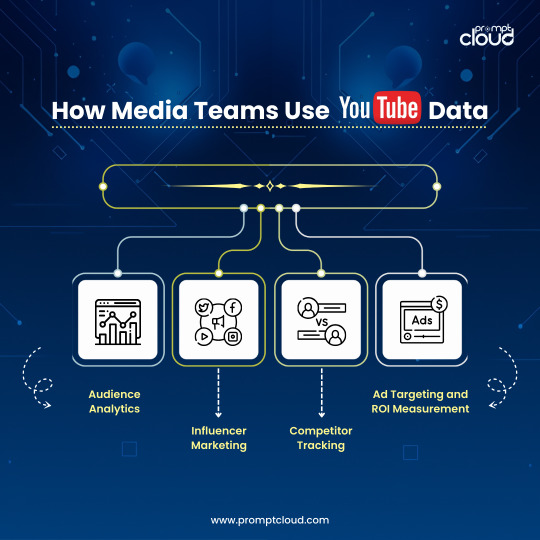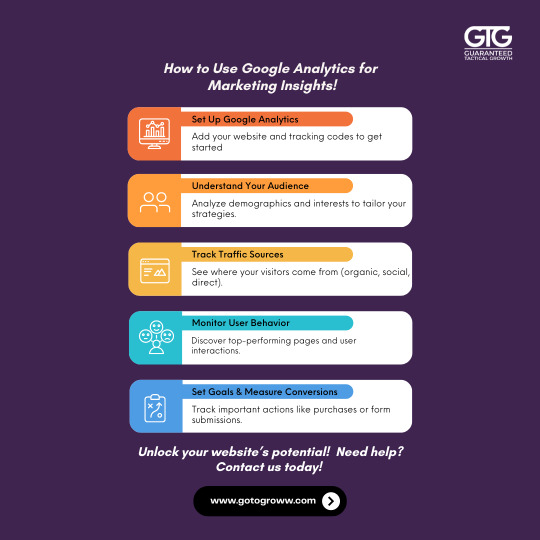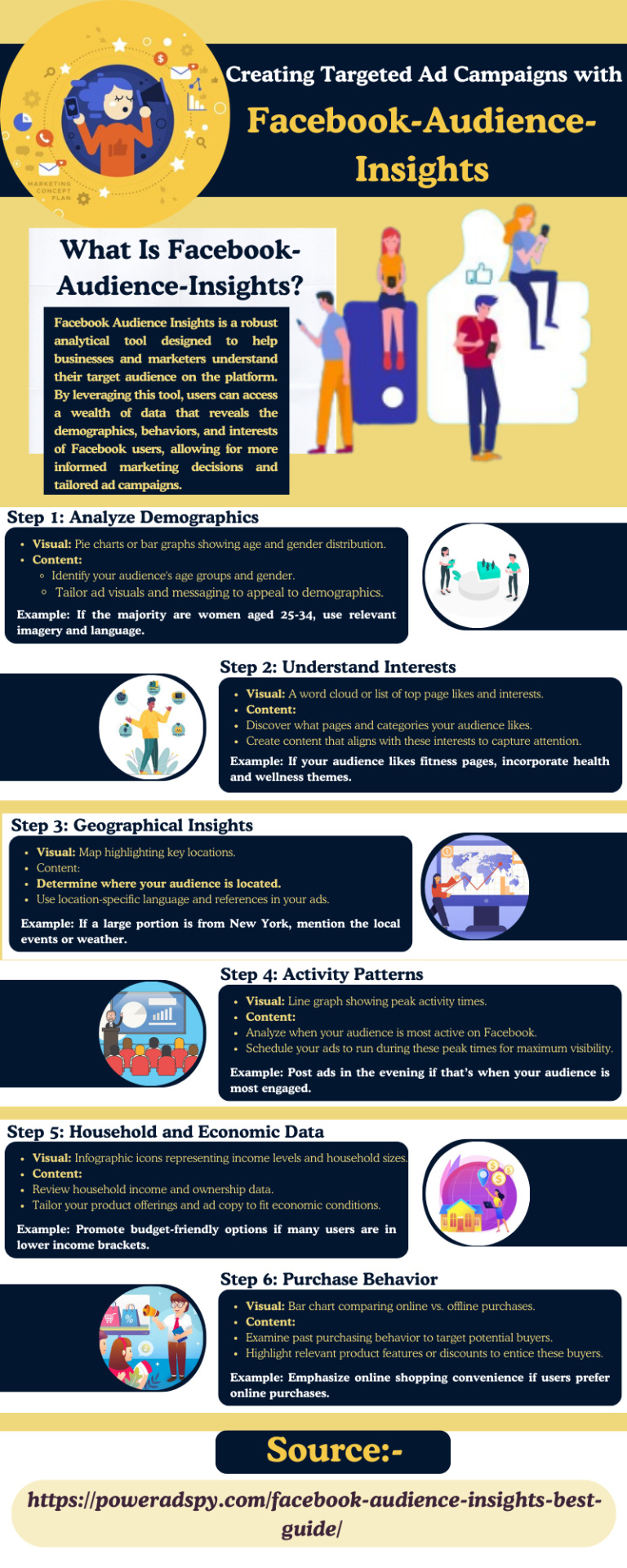#audienceinsights
Explore tagged Tumblr posts
Text
Thousands of videos. Billions of data points.
Media teams are using YouTube data to:
✔️ Decode audience behavior ✔️ Benchmark influencers ✔️ Track competitors ✔️ Optimize ad ROI
👉 Learn how: https://bit.ly/44oi8LV

#YouTubeData#MediaAnalytics#AudienceInsights#InfluencerMarketing#ContentStrategy#DigitalMedia#AdTech#MediaTech#SocialMediaAnalytics#DataDrivenMarketing#VideoMarketing#YouTubeAnalytics#WebScraping#DataExtraction#BigData#DataScience#MediaStrategy#CompetitiveIntelligence#YouTubeTrends#ContentMarketing#PromptCloud
0 notes
Text

Maximize Your YouTube Impact: Analytics for Smarter Strategies Unlock the secret to boosting your #YouTube game with smart analytics strategies! 📈 Discover how to harness audience insights and optimize your content for maximum impact. If you're eager to elevate your channel's performance and engage viewers like never before, this post is a must-read. 🚀 Dive into the world of YouTube analytics today! 💡
Check it out now! - https://acesse.one/Jwgto
#YouTubeAnalytics#ChannelStrategies#ContentOptimization#AudienceInsights#YouTubeMarketing#YouTube#YT#Videos#VideoData#DigitalMarketing
0 notes
Text
Most real estate business marketing mistake...
Real estate businesses often face unique challenges in marketing, and several common mistakes can hinder their growth and success. Here are some of the most frequent marketing mistakes made in the industry:

Failing to Define a Target Audience Mistake: Trying to appeal to everyone instead of focusing on a specific niche or buyer persona (e.g., first-time homebuyers, luxury buyers, or investors). Solution: Create detailed buyer personas and tailor your marketing messages to their needs and preferences.
Ignoring Local SEO Mistake: Not optimizing for local search terms (e.g., "homes for sale in [city]" or "real estate agents near me"). Solution: Claim and optimize your Google Business Profile. Use location-specific keywords in your content and meta tags. Get listed in local directories and encourage client reviews.
Overlooking the Power of Social Media Mistake: Using social media inconsistently or posting irrelevant content. Solution: Regularly post engaging, high-quality content, such as virtual tours, market updates, and tips for buyers and sellers. Leverage paid social ads on platforms like Facebook, Instagram, and LinkedIn to target specific demographics.
Skipping Professional Photography and Videography Mistake: Using low-quality images or skipping videos for property listings. Solution: Invest in professional photography and drone videography to showcase properties. Use 3D virtual tours to attract remote buyers.
Neglecting Email Marketing Mistake: Failing to nurture leads with consistent and valuable email communication. Solution: Send personalized emails with updates on new listings, market trends, and tips. Use automation to follow up with leads promptly.
Relying Solely on Traditional Marketing Mistake: Focusing only on print ads, direct mail, or billboards without incorporating digital strategies. Solution: Balance traditional methods with digital tactics like PPC ads, SEO, and social media campaigns.
Not Tracking and Analyzing Performance Mistake: Running campaigns without monitoring KPIs like website traffic, lead generation, and conversion rates. Solution: Use tools like Google Analytics, Facebook Ads Manager, and CRM platforms to track and optimize your efforts. Test and adjust campaigns based on data insights.
Overlooking Mobile Optimization Mistake: Having a website that isn’t mobile-friendly or doesn’t load quickly. Solution: Ensure your website is responsive and optimized for mobile devices. Use fast-loading pages with easy navigation and clear CTAs.
Missing Out on Video Marketing Mistake: Not leveraging video content for property showcases or educational content. Solution: Create videos for property tours, client testimonials, and market updates. Post videos on YouTube, social media, and your website.
Not Building a Personal Brand Mistake: Failing to differentiate yourself from competitors. Solution: Showcase your expertise, values, and unique approach to real estate. Use storytelling and testimonials to build trust and credibility.
Lack of Consistency Mistake: Inconsistent branding, messaging, or posting schedules. Solution: Develop a content calendar for consistent posting. Maintain a unified brand voice across all platforms.
Overlooking the Importance of Reviews Mistake: Not collecting or showcasing client reviews and testimonials. Solution: Actively ask for reviews and display them on your website, social media, and Google Business Profile.
Not Using Retargeting Ads Mistake: Losing potential clients after their first interaction with your website or ad. Solution: Use retargeting campaigns on Google and social media to re-engage visitors who didn’t convert.
Being Too Salesy Mistake: Overloading potential clients with sales pitches without providing value. Solution: Focus on providing helpful content, such as market insights, buying/selling tips, and neighborhood guides.
Underestimating Networking Mistake: Not actively networking with other professionals or clients. Solution: Attend local events, collaborate with businesses, and build a strong referral network.
Would you like help creating a real estate marketing plan or optimizing your current strategy?
#real estate marketing#real estate marketing ideas#real estate#real estate agent#real estate business#real estate training#real estate marketing tips#real estate marketing plan#real estate coaching#real estate marketing agency#real estate marketing strategies#real estate agent marketing strategies#social media marketing for real estate agents#marketing for real estate#real estate marketing 2021#real estate marketing strategy#real estate success#PayPerClick#ConversionOptimization#CustomerInsights#AudienceInsights#googleads#marketingstrategy#search engine marketing#digitalmarketing#facebookads#make money online#make money from home#google#graphic design
0 notes
Text
Brand Intelligence: Transforming Data into Action
Opinion Ads specializes in delivering cutting-edge Brand Intelligence to help you understand your brand’s visibility, audience behaviour, and market trends. Our detailed reports and analytics tools empower businesses to track competitor positioning and uncover growth opportunities. Make data-driven decisions with Opinion Ads today.
0 notes
Text
Powerful Software for Precise Customer Segmentation
Unlock deeper audience insights with advanced Customer Segmentation Software. Precisely segment your customer base, target the right audience, and optimize marketing strategies for improved ROI. https://commence.com/software-features/customer-segmentation-software/

0 notes
Text
How to find relevant topics and subjects for social media posts for a startup business
Creating impactful and engaging social media content is essential for any startup business aiming to connect with its target audience. Finding the right topics and subjects requires strategic planning and creativity. Below, we explore actionable strategies to discover compelling social media topics and how these methods can boost your online presence. 🌟
Understand your audience’s interests and pain points
Knowing your audience is the foundation of effective social media marketing. Start by identifying their preferences, challenges, and aspirations. Use surveys, polls, and analytics tools to gather insights. By aligning your content with their interests, you can foster stronger engagement. For example, if your startup addresses sustainable living, focus on eco-friendly tips and success stories.
Use social listening tools
Social listening helps you track conversations about your industry and competitors. Tools like Hootsuite and BuzzSumo enable you to understand trending topics and find content gaps. This insight helps create posts that resonate, whether you are crafting LinkedIn ads for professionals or Instagram ads for younger audiences. 🕵️♂️
Leverage seasonal and trending themes
Capitalise on current trends, holidays, and awareness days relevant to your startup. Whether it is Christmas, National Small Business Week, or a viral meme, tying your content to these events can increase visibility. For instance, running Facebook ads highlighting seasonal offers is a great way to attract new customers. 🎄✨
Repurpose and refresh existing content
Revisit past blogs, case studies, or guides, and reimagine them for social media. Break down a lengthy article into bite-sized posts or create a graphic to highlight key takeaways. This approach saves time while maximising the value of your resources.
Collaborate with a marketing agency
Startups often lack time and expertise to handle social media effectively. Collaborating with a social media agency like Plenty of Stuff Studio in Winchester can be a game-changer. With services spanning social media ads, SEO, and digital marketing, their team, led by Tim Holt and Kiana Douglin, ensures your content reaches the right audience. Their creative and analytical approach helps startups grow organically across platforms.
Explore SEO-driven topics
Incorporate SEO principles into your social media strategy. Use tools like Google Trends and Keyword Planner to identify relevant phrases your audience searches for. High-ranking keywords not only improve post visibility but also attract organic traffic to your website. Combine this strategy with engaging captions and visuals for platforms like Instagram ads or Facebook.
Engage with your audience
Interactions build relationships and inspire content ideas. Respond to comments, ask questions, and conduct polls to understand what your followers value most. This two-way dialogue often reveals content ideas you might not have considered.
Experiment with different formats
Do not limit yourself to standard posts. Experiment with videos, infographics, carousels, and stories to maintain variety. Visual formats tend to perform well, especially on Instagram ads, where dynamic content grabs attention.
Monitor your competitors
Keep an eye on competitors to see which types of content resonate with their audiences. Use this as inspiration while adding your unique twist to stand out. An analysis by a marketing agency like Plenty of Stuff Studio can help refine your approach.
Consistent analytics tracking
Analytics tools on platforms like Facebook, Instagram, and LinkedIn provide insights into post performance. Regularly track metrics like reach, engagement, and click-through rates to understand what works best. Use this data to optimise future posts. 📊
Work with experts to amplify your strategy
For startups aiming to scale quickly, outsourcing social media efforts to a trusted social media agency in Hampshire is a smart move. Plenty of Stuff Studio offers comprehensive services, from paid ads to digital marketing campaigns, that help businesses gain traction effectively.
Conclusion
Finding relevant topics for social media posts involves a mix of creativity, data analysis, and audience understanding. Startups can leverage strategies like SEO, seasonal trends, and collaboration with experts to ensure their content remains engaging. By partnering with agencies like Plenty of Stuff Studio, startups can confidently navigate the social media landscape, driving meaningful connections and business growth. 🌐✨
Learn more and contact our team
Visit our website, https://plentyofstuff.studio/our-services/social-media/, to learn more about how Plenty of Stuff Studio can help your business with social media marketing.
We love to share our marketing and creative experience with our customers. Reach out and let our experienced marketing team assist your business. Contact our team by email, [email protected], we cannot wait to work with you!
#StartupTips#SocialMediaStrategy#ContentCreation#EngagementBoost#AudienceInsights#DigitalMarketingTools#CreativeContentIdeas#VisualStorytelling#AnalyticsDriven#MarketResearchStrategies#SocialMedia#SocialMediaMarketing
0 notes
Text

🚀 Welcome to NotifyStudio.com – Redefine Visitor Engagement!
Are you looking to boost conversions and increase engagement on your website? NotifyStudio.com offers an all-in-one platform to help you connect with your audience, build trust, and drive actions with impactful on-site widgets! From informational messages to interactive feedback and real-time counters, our features are designed to make your website stand out and turn visits into lasting connections.
With NotifyStudio.com, you’ll have the tools to:
Capture visitor attention with personalized messages.
Collect valuable insights and feedback to understand your audience.
Increase conversions by adding urgency and social proof.
Enhance brand experience with fully customizable options.
🌟 Stay ahead in the digital game and see the difference NotifyStudio.com can make!
✨ Try NotifyStudio.com and watch your engagement soar! 🌟
#WebsiteEngagement#BoostConversions#DigitalMarketing#AudienceInsights#SocialProof#CustomerFeedback#InteractiveMarketing#LeadGeneration#BusinessGrowth#WebsiteWidgets#NotifyStudio#OnlineEngagement#MarketingTools#EngagementStrategy#DigitalTransformation
0 notes
Text
Fan Demographics: Analyzing Data for Targeted Marketing
Understanding your audience is the cornerstone of effective marketing. Whether you’re a musician, content creator, or business owner, knowing who your fans are allows you to tailor your messaging, products, and services to meet their needs and preferences. This is where fan demographics come into play. By analyzing demographic data, you can gain valuable insights into your audience’s age, gender, location, interests, and more. In this blog post, we’ll explore the importance of fan demographics, discuss how to analyze this data, and provide strategies for using it to create targeted marketing campaigns that resonate with your audience.
The Importance of Understanding Fan Demographics
**Personalized Marketing**
One of the biggest advantages of understanding fan demographics is the ability to create personalized marketing campaigns. When you know who your fans are, you can craft messages that speak directly to them, addressing their specific interests, needs, and pain points. This level of personalization can lead to higher engagement rates, increased loyalty, and ultimately, more conversions.
**Optimized Content Creation**
Content creation is at the heart of any successful marketing strategy. By analyzing fan demographics, you can determine what type of content resonates most with your audience. For example, if your fan base consists mainly of younger individuals, you might focus on creating content that’s more visual and shareable on platforms like Instagram or TikTok. On the other hand, if your audience is older, you might prioritize long-form content and educational resources.
**Efficient Ad Spend**
When you understand your audience, you can allocate your ad budget more effectively. Instead of casting a wide net and hoping for the best, targeted marketing allows you to focus your resources on the platforms, channels, and demographics that are most likely to convert. This not only saves you money but also increases the return on investment (ROI) for your marketing efforts.
**Better Product Development**
Fan demographics can also inform product development. By understanding the preferences and behaviors of your audience, you can create products and services that are more likely to meet their needs and desires. This can lead to higher customer satisfaction and more repeat business.
Key Fan Demographics to Analyze
**Age**
Age is one of the most important demographics to consider. Different age groups have different preferences, behaviors, and spending habits. For example, younger fans might be more interested in social media interactions and digital products, while older fans might prefer traditional media and physical goods.
**Gender**
Gender can also play a significant role in shaping your marketing strategy. By understanding the gender distribution of your audience, you can create campaigns that resonate with specific groups. For instance, if your fan base is predominantly female, you might focus on themes and messaging that appeal to women.
**Location**
Geographical data is crucial for understanding where your fans are located. This can help you tailor your marketing efforts to specific regions, cities, or even neighborhoods. Location data can also inform decisions about where to host events, how to price products, and which markets to target next.
**Interests and Hobbies**
Understanding your fans’ interests and hobbies allows you to create content and products that align with their passions. For example, if a large portion of your audience is interested in fitness, you might create content that ties your brand to healthy living or active lifestyles.
**Income Level**
Income level can influence purchasing decisions and should be considered when pricing products or creating marketing campaigns. If your audience has a higher income, they might be more interested in premium products and services. Conversely, if your audience has a lower income, you might focus on affordability and value.
**Education Level**
Education level can provide insights into the type of content and messaging that will resonate with your audience. For example, a more educated audience might prefer detailed, data-driven content, while a less educated audience might respond better to simple, straightforward messaging.
How to Gather and Analyze Fan Demographics
**Step 1: Use Social Media Analytics**
Social media platforms like Facebook, Instagram, and Twitter offer built-in analytics tools that provide demographic data about your followers. These tools can give you insights into the age, gender, location, and interests of your audience. Regularly reviewing these analytics can help you stay informed about who your fans are and how they’re engaging with your content.
**Step 2: Conduct Surveys and Polls**
Surveys and polls are effective ways to gather demographic data directly from your audience. You can ask questions about age, gender, location, interests, and more. Tools like Google Forms, SurveyMonkey, and social media polls make it easy to create and distribute surveys to your fans.
**Step 3: Analyze Website Traffic Data**
Tools like Google Analytics provide detailed information about the demographics of your website visitors. You can see data on age, gender, location, and even the devices and browsers your audience is using. This information can help you understand who’s visiting your site and how they’re interacting with your content.
**Step 4: Monitor Purchase Data**
If you’re selling products or services, analyzing purchase data can give you valuable insights into your audience’s demographics. Look at the age, gender, and location of your customers, as well as their purchasing habits. This can help you identify trends and tailor your offerings to better meet their needs.
**Step 5: Use Third-Party Data Providers**
There are many third-party data providers that can help you gather demographic information about your audience. These services often aggregate data from various sources to provide a more comprehensive view of your audience. Some popular options include Nielsen, Comscore, and Experian.
Strategies for Targeted Marketing Based on Demographics
**Create Segmented Campaigns**
One of the most effective ways to use demographic data is to create segmented marketing campaigns. By dividing your audience into smaller groups based on age, gender, location, or interests, you can create more personalized and relevant messaging. For example, you might create separate email campaigns for different age groups, with each campaign highlighting products or content that’s most likely to appeal to that group.
**Tailor Your Content Strategy**
Use demographic data to inform your content strategy. If your audience is predominantly young, focus on creating content that’s visually engaging and easily shareable. If your audience is older, you might prioritize more in-depth articles, videos, and educational content. Tailoring your content to the preferences of your audience can lead to higher engagement and more meaningful connections with your fans.
**Optimize Your Ad Targeting**
Demographic data is invaluable when it comes to ad targeting. Platforms like Facebook and Google Ads allow you to target ads based on age, gender, location, interests, and more. By using this data to refine your ad targeting, you can ensure that your ads are being seen by the people who are most likely to engage with them.
**Personalize Your Messaging**
Personalization is key to effective marketing. Use demographic data to create personalized messages that speak directly to your audience’s needs and interests. Whether it’s through email marketing, social media, or direct mail, personalized messaging can increase engagement and build stronger relationships with your fans.
**Adjust Your Pricing and Promotions**
Consider the income level and purchasing habits of your audience when setting prices and creating promotions. If your audience is price-sensitive, you might offer discounts, bundles, or loyalty programs to encourage purchases. On the other hand, if your audience values premium products, you might focus on highlighting the quality and exclusivity of your offerings.
Conclusion
Understanding fan demographics is essential for creating targeted marketing campaigns that resonate with your audience. By analyzing data on age, gender, location, interests, and more, you can gain valuable insights into who your fans are and what they want. This knowledge allows you to personalize your marketing efforts, optimize your content strategy, and allocate your resources more effectively. Start by gathering demographic data using social media analytics, surveys, website traffic data, and purchase data. Then, use this information to create segmented campaigns, tailor your content, and refine your ad targeting. With a deep understanding of your audience, you can create marketing campaigns that truly connect with your fans and drive meaningful results.
FAQs
FAQ 1: What are fan demographics?
Fan demographics refer to the statistical characteristics of your audience, such as age, gender, location, interests, income level, and education. Understanding these demographics helps you tailor your marketing efforts to better connect with your audience.
FAQ 2: How can I gather demographic data about my audience?
You can gather demographic data using social media analytics, surveys, website traffic tools like Google Analytics, purchase data, and third-party data providers.
FAQ 3: Why is it important to understand fan demographics?
Understanding fan demographics allows you to create personalized marketing campaigns, optimize content, allocate your ad budget more effectively, and develop products that meet your audience’s needs.
FAQ 4: How can I use fan demographics for targeted marketing?
Use fan demographics to create segmented campaigns, tailor your content strategy, optimize ad targeting, personalize your messaging, and adjust pricing and promotions based on your audience’s preferences.
FAQ 5: What tools can help me analyze fan demographics?
Tools like Google Analytics, social media analytics platforms, SurveyMonkey, and third-party data providers like Nielsen and Comscore can help you analyze fan demographics and gain valuable insights into your audience.
#FanDemographics#TargetedMarketing#DataAnalysis#MarketResearch#AudienceInsights#ConsumerBehavior#MarketingStrategy#DataDriven#FanEngagement#BusinessGrowth
0 notes
Text
Social Media Monitoring Services - Vee Technologies

We deliver comprehensive and easy-to-understand social media monitoring reports to your inbox daily that enable faster responses and allow you to adjust more effectively to real-time scenarios.
Explore More: https://www.veetechnologies.com/industries/media/media-monitoring/social-media-monitoring.htm
#SocialMediaMonitoring#BrandMonitoring#SocialMediaAnalytics#OnlineReputationManagement#SocialMediaInsights#DigitalMarketing#CustomerEngagement#MarketResearch#SocialMediaTrends#ContentAnalysis#DataDrivenMarketing#BrandAwareness#AudienceInsights#VeeTechnologies
1 note
·
View note
Text
#SocialMediaMetrics#DigitalMarketing#DataDrivenMarketing#SocialMediaROI#MarketingAnalytics#AudienceInsights#SocialMediaGoals#ContentStrategy#KPIs#CustomerEngagement#BrandAwareness#SocialMediaGrowth#PerformanceMeasurement#SocialListening#MarketingBestPractices
0 notes
Text

How to Use Google Analytics for Marketing Insights! Unlock the full potential of your website with Google Analytics! 🚀 Discover key insights about your audience, traffic sources, and user behavior to refine your marketing strategies. Plus, learn how to set goals and track conversions effectively. Ready to make data-driven decisions? Let’s get started!
#GoogleAnalytics#DigitalMarketing#MarketingTips#BusinessStrategy#SEO#AudienceInsights#ConversionRates#ContentMarketing#gotogroww
0 notes
Text

In this infographic we will learn how to create ad campaigns with facebook-audience-insights
#facebookaudienceinsights#facebookaudienceinsightstool#audienceinsights#howtogettoaudienceinsightsonfacebook
0 notes
Text

Crafting content that resonates—because knowing your audience is the key to engagement! 🎯✍️💡
Follow👉 @biographiness
#Biographiness#Biograghines#ContentCreation#KnowYourAudience#DigitalMarketing#SocialMediaTips#EngagementStrategy#MarketingWisdom#AudienceInsights#ContentStrategy#BrandMessaging#TargetedContent
1 note
·
View note
Text
The Impact of AI on Improving Social Media Marketing Strategies

In the ever-evolving landscape of digital marketing, social media has emerged as a powerful tool for businesses to engage with their audience, build brand awareness, and drive conversions. With the rise of artificial intelligence (AI), social media marketing strategies have undergone a significant transformation, enabling businesses to leverage data-driven insights and automation to improve their campaigns. In this blog post, we'll explore the profound impact of AI on improving social media marketing strategies and how businesses can improve its potential to stay ahead in the competitive digital market.
Knowing Artificial Intelligence's Place in Social Media Marketing
AI encompasses a range of technologies, including machine learning, natural language processing, and predictive analytics, which empower businesses to analyze vast amounts of data and extract actionable insights. In the context of social media marketing, AI plays a crucial role in automating repetitive tasks, personalizing content, and optimizing campaign performance.
Data Analysis and Insights: The ability of AI to examine big information in real-time is one of the main advantages it offers in social media marketing. AI-powered tools can monitor social media conversations, track user engagement metrics, and identify emerging trends, allowing businesses to gain valuable insights into their audience preferences and behavior.
Content Personalization: AI algorithms can analyze user data, such as browsing history, demographics, and past interactions, to personalize content and recommendations. By delivering tailored content to individual users, businesses can increase engagement, improve customer satisfaction, and drive conversions.
Predictive Analytics: AI-driven predictive analytics enable businesses to anticipate customer needs and preferences based on historical data and trends. By forecasting future trends and behaviors, businesses can proactively adjust their social media strategies to stay ahead of the competition and maximize ROI.
Automated Advertising: AI-powered advertising platforms, such as Facebook Ads and Google Ads, utilize machine learning algorithms to optimize ad targeting, bidding strategies, and creative elements. By automating the advertising process, businesses can reach their target audience more effectively and achieve better results with their ad campaigns.
Improving Social Media Marketing Strategies with AI

Now that we've explored the role of AI in social media marketing, let's discuss how businesses can leverage AI to improve their marketing strategies and achieve their objectives.
Audience Segmentation and Targeting: AI algorithms can analyze user data to segment audiences based on demographics, interests, and behaviors. By targeting specific audience segments with personalized content and offers, businesses can improve engagement and conversion rates.
Content Optimization: AI-powered content optimization tools can analyze the performance of social media posts in real-time and suggest improvements to improve their effectiveness. From optimizing headlines and images to recommending the best times to post, AI can help businesses create compelling content that resonates with their target audience.
Chatbots and Virtual Assistants: AI-driven chatbots and virtual assistants enable businesses to provide personalized customer support and assistance on social media platforms. By automating routine customer inquiries and interactions, businesses can improve response times, improve user experience, and free up resources for more strategic tasks.
Social Listening and Sentiment Analysis: AI-powered social listening tools can monitor conversations across social media platforms to identify relevant keywords, trends, and sentiment. By tracking brand mentions and customer feedback in real-time, businesses can gain valuable insights into their brand reputation and market perception, enabling them to respond promptly to emerging issues and capitalize on opportunities.
Ad Campaign Optimization: AI algorithms can analyze the performance of ad campaigns and make real-time adjustments to optimize targeting, bidding, and creative elements. By continuously optimizing ad campaigns based on user engagement and conversion data, businesses can maximize their advertising ROI and achieve better results with their marketing budget.
Conclusion,
The impact of AI on improving social media marketing strategies cannot be overstated. From data analysis and content personalization to automated advertising and predictive analytics, AI empowers businesses to optimize their social media campaigns and achieve their marketing objectives more effectively. By improving the power of AI-driven tools and technologies, businesses can stay ahead of the competition, engage with their audience on a deeper level, and drive meaningful results in the dynamic world of social media marketing. As AI continues to evolve and innovate, businesses that embrace this technology will undoubtedly reap the benefits of improved efficiency, effectiveness, and ROI in their social media marketing efforts.
Click here to learn more about The role of AI in streamlining social media marketing workflows and processes.
#aiinmarketing#socialmediaai#marketingautomation#datadrivenmarketing#personalizedmarketing#digitalstrategy#sociallistening#adtech#predictiveanalytics#chatbots#socialmediatrends#digitaltransformation#marketingtech#contentoptimization#audienceinsights
0 notes
Text

Unlock the secret to successful marketing by understanding your audience. Tailoring your message to their needs, preferences, and behaviors ensures engagement and drives results. Knowing your audience allows you to create targeted campaigns, build strong connections, and achieve higher conversion rates.
0 notes
Text
Unleashing Digital Marketing Potential: The Role of Analytics

Frankly in the world of digital marketing you cannot rely on feelings only – it stresses the need for data-oriented insights. See that marketing analytics is the very spirit that can lead you into digital marketing success.
Unlocking Insights: It’s not all numbers that marketing analytics is about. It’s finding hidden patterns and behaviors, which can be applied to create good strategies.
Maximizing ROI: As a result of adopting data-driven decisions, companies have a high likelihood of accomplishing significant ROI growth, which undoubtedly affirms the effectiveness of analytics in guaranteeing remarkable achievements.
Targeting Precision: Knowing the audience characteristics is enables marketers to construct messages that are effective as pointed darts, the most productive scenario of engagement and conversion.
Continuous Optimization: They can always keep an eye on their performance with respect to running different tactics by making appropriate changes in real time and therefore have a chance to be on top of the game in today's fast-paced digital world.
Read more: Marketing Analytics Guides You To Digital Marketing Success.
#DigitalMarketing#Analytics#DataDriven#MarketingStrategy#ROI#AudienceInsights#Optimization#TumblrPost
0 notes